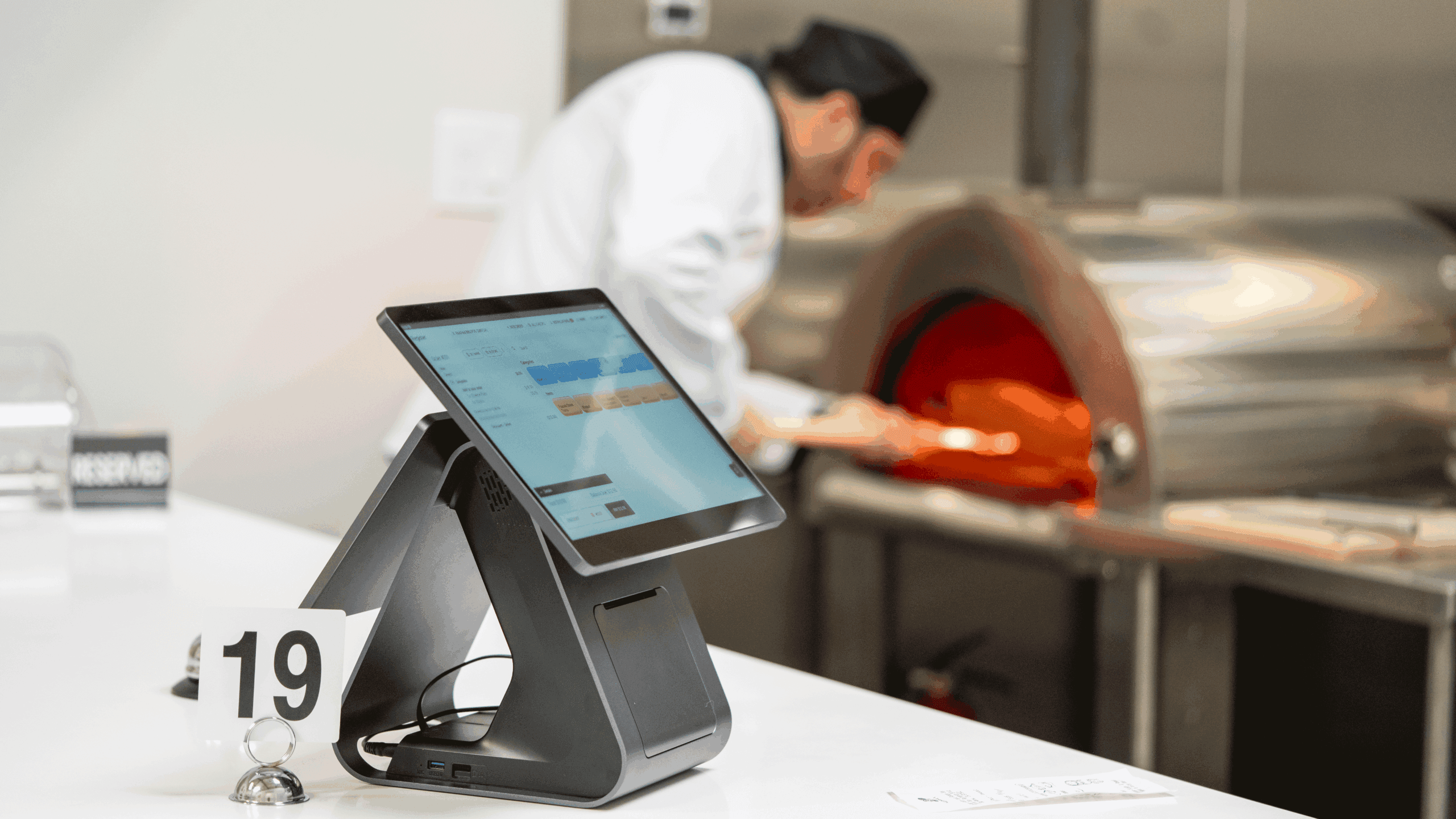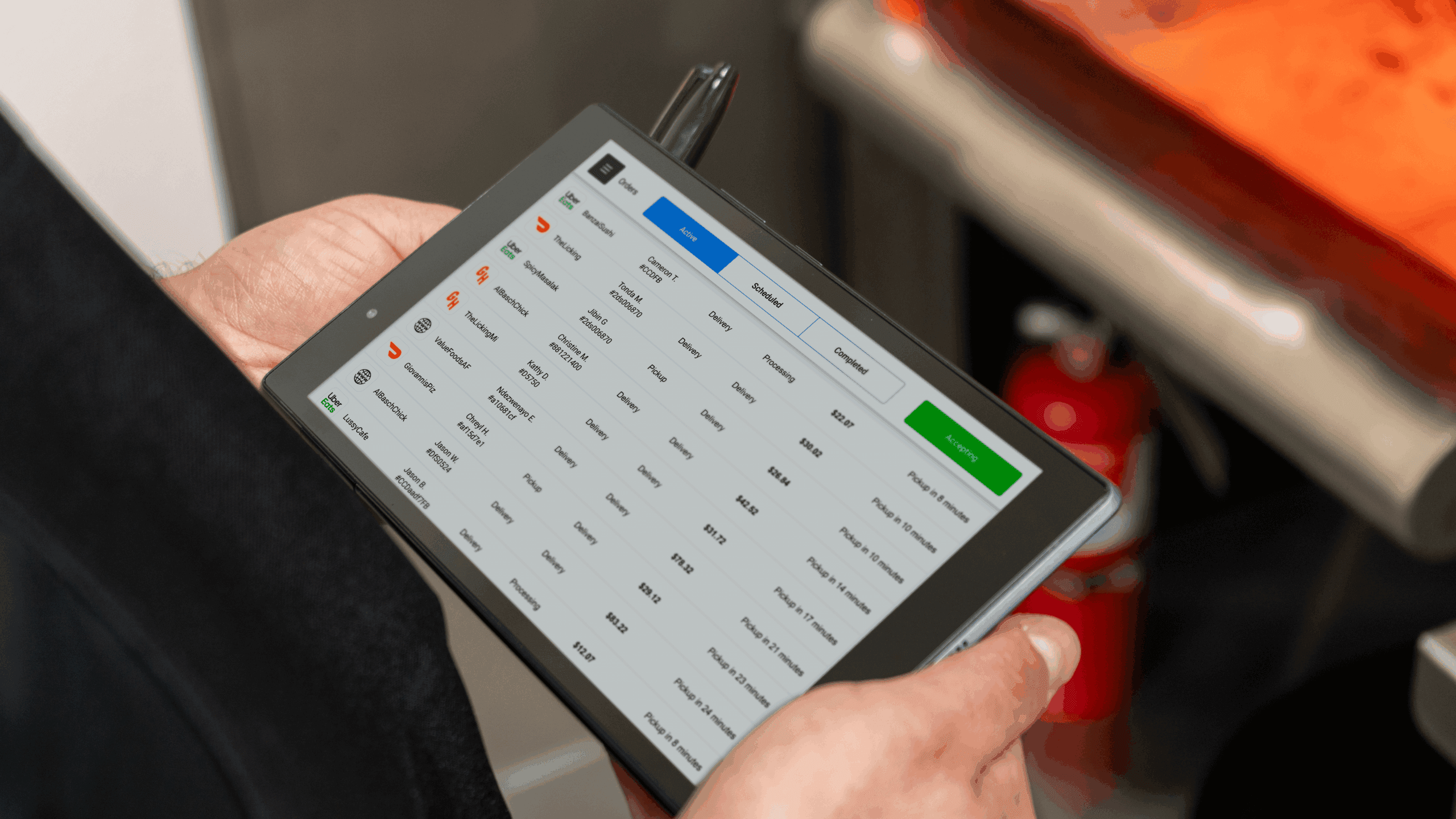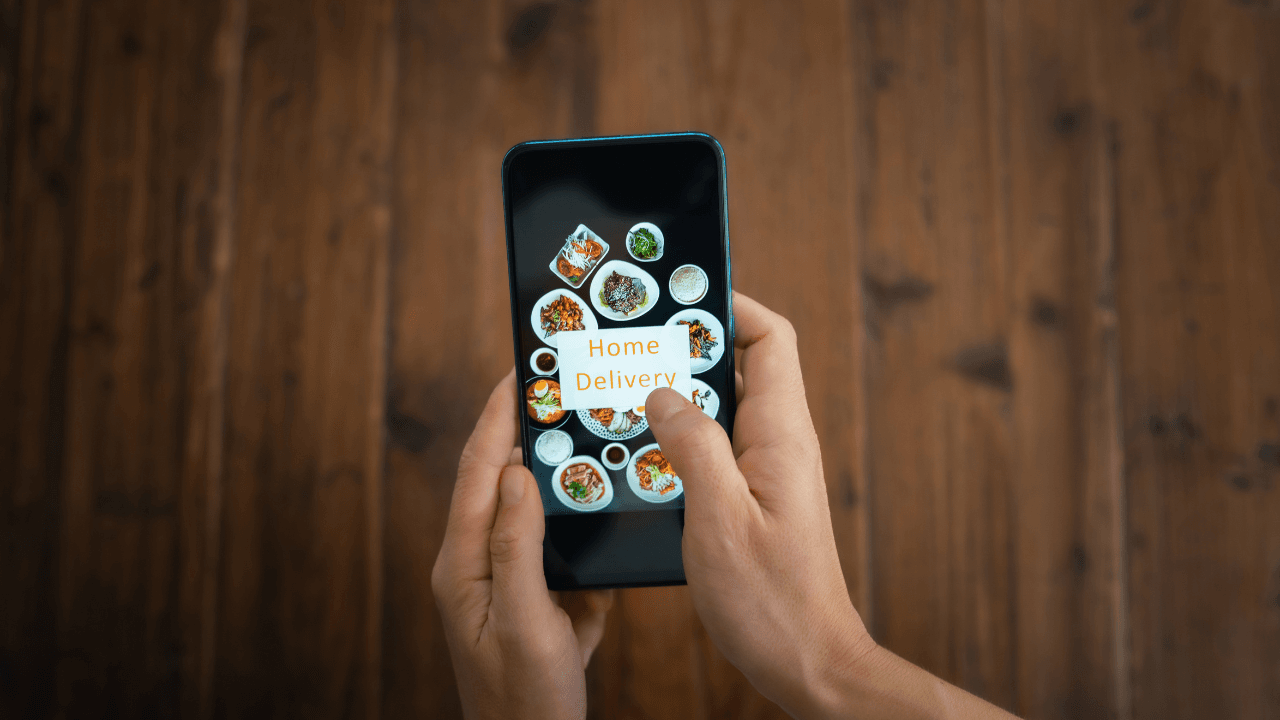- What You Need To Know About Selling Food Online
- Crafting An Effective Marketing Plan For Your Food Business
- The Power Of Third-Party Delivery Platforms And Integrated Solutions
- Having Your Own Restaurant Ordering Website
- Simplify Online Orders Management with Orders.co
As a restaurant owner, taking your business online is no longer optional—it’s essential for staying relevant and reaching a broader audience.
The internet has revolutionized the restaurant industry, transforming everything from discovering new eateries to ordering food and marketing to potential customers.
One of the most significant shifts is the ability to sell food online.
What You Need To Know About Selling Food Online
According to the research, 80% of consumers say they would do more food shopping online if the experience was improved.
With the global food and beverage market expected to reach more than $8 billion by 2025, there has never been a better time to start selling food online!
Be Aware of the Law
The first thing you need to know about how to sell food online is the regulations and laws.
These laws vary from state to state, so you will need to do research to make sure you are compliant in the state in which you want to sell your food products.
In the United States, the FDA (Food and Drug Administration) has a set of regulations called the Food Safety Modernization Act (FSMA) that all food businesses need to follow. These regulations cover everything from food storage and handling to transportation and labeling.
Choose the Food Industry Segment
When learning how to sell food online, deciding on the right food industry segment is an essential step in the process.
Once you have familiarized yourself with the laws and regulations surrounding food production and sales, you must decide what kind of food business you want to create. There are three main types of food businesses:
Food Manufacturer: A food manufacturer produces food products that are sold to other companies, such as supermarkets, restaurants, and food service companies.
Food Retailer: A food retailer sells food products directly to consumers. There are two main types of food retailers: online and offline. Online food retailers sell their products through their website or a third-party marketplace.
Offline food retailers sell their products through brick-and-mortar stores, such as supermarkets, convenience stores, and specialty food stores.
Food Service: The three main types of food services are catering, delivery, and takeout/dine-in. Catering businesses provide food products and services for special events like weddings, birthday parties, and corporate events.
Delivery businesses deliver food products to consumers’ homes or workplaces. Takeout and dine-in businesses provide food products that customers can take home or eat at restaurants.
Find the Right Niche
Finding the right niche is a key component in effectively mastering how to sell food online. This is the next step in starting your food business. There are two main ways to find a niche for your food business:
Sell a unique food product: Ensure your product differs from anything else on the market. This can be accomplished by creating a new food product or improving an existing one. Examples include a new type of cheese, gluten-free pasta sauce, dairy-free ice cream, sugar-free candy, or low-carbohydrate bread.
Uniquely sell a common food product: Find a niche market underserved by the current food industry. This can be accomplished by selling an existing food product in a new way or catering to a specific group of people. Examples include organic baby food, gourmet pet food, a Kosher meal delivery service, a Paleo-friendly catering service, or a vegan meal kit subscription service.
Knowing how to partner with a food delivery app can also help you tap into underserved markets effectively.
Find the Right Suppliers
The food industry’s supply chain differs greatly from other industries because it deals with perishable goods. There are two leading suppliers for food businesses: food manufacturers and food distributors.
Food manufacturers produce pasta sauces, snacks, and baked goods, while food distributors distribute products from manufacturers to retailers.
When choosing a supplier, consider the following factors: quality, price, location, shipping, and customer service.
Understanding how to sell food online includes finding reliable suppliers to ensure the quality and consistency of your products.
Crafting An Effective Marketing Plan For Your Food Business
Creating a comprehensive marketing plan is crucial for the success of your food business. Here’s how to develop a structured and effective marketing strategy:
Target Market: Begin by defining who your customers are based on demographics, psychographics, and geographical location to tailor your marketing efforts accordingly.
Unique Selling Proposition (USP): Identify what distinguishes your food business from competitors, such as unique flavors or superior quality, to create a strong brand identity.
Marketing Mix:
- Product: Describe the features and benefits of your food product.
- Price: Set your pricing strategy based on costs, market demand, and competitor pricing.
- Place: Choose where to sell your product, considering online platforms, local markets, or grocery stores.
- Promotion: Plan promotional activities like online advertising, social media marketing, and partnerships with influencers.
Marketing Budget: Allocate a specific budget for all marketing activities, ensuring you balance financial capabilities with marketing goals.
Sales Goals: Set specific, measurable, achievable, relevant, and time-bound sales goals to measure the effectiveness of your marketing strategies.
Continuous Monitoring: Regularly assess the performance of your marketing efforts and adjust your strategy based on analytical feedback to optimize your approach and resources.
By following these steps, you’ll craft a marketing plan that effectively reaches your audience, drives growth, and sustains your business in a competitive market.
Packaging and Labeling
The next step in starting your food business is to choose the proper packaging and labeling for your food products. There are two main types of packaging for food products: primary and secondary.
Some examples of primary packaging for food products include bottles, cans, jars, bags, boxes, pouches, and wraps. Examples of secondary packaging include cases, cartons, crates, and pallets.
When choosing to package your food product, you will need to consider the following factors:
- Function: Ensure the packaging serves the intended function.
- Cost: Choose cost-effective packaging.
- Sustainability: Opt for sustainable packaging.
- Deliverability: Evaluate how the packaging holds up during delivery.
- Recyclability: Select recyclable packaging.
- Branding: Use packaging that reflects your brand.
Food Photography and Presentation Tips
For effective food photography, consider the success of brands like Instagram-famous bakeries that showcase their confections through vivid, high-resolution images.
For example, a New York bakery might use a soft, pastel background to make its vibrant macarons pop, attracting a large following and high engagement rates.
Styling tips include placing a slice of lemon beside a seafood dish to enhance freshness or a sprinkle of herbs to suggest homemade authenticity. These small details can significantly elevate the perceived value of your offerings.
The Power Of Third-Party Delivery Platforms And Integrated Solutions
Third-party platforms like Grubhub, Uber Eats, and DoorDash are essential for new restaurants looking to increase visibility and reach a broader customer base.
We recommend starting with two delivery apps to explore different market segments and find the best fit for your offerings.
Wider Market Access: Third-party platforms like Grubhub, Uber Eats, and DoorDash dominate the food delivery market, with millions of active users. Knowing how to partner with these delivery apps, food businesses can instantly access a massive, diversified consumer base that might otherwise be unreachable.
Robust Delivery Infrastructure: These services have perfected the art of delivery logistics, which is crucial for maintaining food quality and customer satisfaction. The efficiency of their delivery networks ensures that food arrives at customers’ doorsteps promptly and in optimal condition, which is essential for repeat business.
Moreover, many of these platforms offer features like real-time tracking, which enhances the customer’s experience and trust in the service.
Enhanced Marketing Capabilities:
- Targeted Advertising: Third-party platforms often have sophisticated data analytics tools that allow businesses to engage in highly targeted advertising based on customer demographics, behavior, and preferences.
- Promotional Campaigns: Businesses can participate in promotional campaigns run by these platforms. These campaigns are often subsidized or supported by the platform’s broader marketing budget, increasing the business’s visibility at a fraction of the cost.
Secure Transaction Processing: Processing payments through these platforms reduces the complexity and security concerns associated with processing credit card information and other payment details.
They implement the latest security protocols to safeguard against fraud, thereby enhancing customers’ trust.
Customer Service Support: By outsourcing customer service to these platforms, businesses can alleviate a significant portion of their operational burden.
These platforms have dedicated resources to swiftly address customer complaints and issues, which is vital for maintaining customer satisfaction and loyalty.
Cost Management: While third-party apps charge commissions that can be as high as 30%, they also handle logistics and delivery, reducing the need for restaurants to invest in their own delivery infrastructure, which is especially useful for new businesses.
This balance allows restaurants to offer delivery services without the upfront costs, though many also find value in developing commission-free direct ordering websites to retain more profits and customer data.
Learn more about How Much Does Grubhub Charge Restaurants and How Much Does DoorDash Charge Restaurants in our blogs.
Having Your Own Restaurant Ordering Website
Develop Your Own Website for Brand Strengthening and Direct Engagement
As your restaurant matures, besides partnering with different delivery apps, creating your own ordering website becomes essential. This platform not only strengthens your brand presence but also provides a direct channel for customer engagement.
With online ordering becoming increasingly popular, 77% of consumers visit a restaurant’s website before placing an order, it’s crucial for restaurants to maintain a dedicated online platform.
This website serves as a central hub where customers can easily view the menu, place orders, and pay, all while enjoying a seamless, branded experience.
For example, while maintaining cooperation with third-party delivery services, a local pizzeria can use its website to showcase unique pizza varieties and special deals, while a sushi restaurant might highlight fresh seasonal offerings.
These custom ordering sites allow for real-time updates, such as introducing new menu items or promoting special events, keeping customers informed and engaged.
Orders.co offers a commission-free custom online food ordering system that integrates these features, enabling restaurants to collect valuable customer data for personalized marketing campaigns.
This data can be used to send tailored promotions, such as birthday discounts or notifications about new dishes.
By providing a direct ordering option, restaurants can build stronger customer relationships, enhancing loyalty and profitability.
Tips for Success When Selling Food Online
To increase your chances of a successful food-selling strategy, consider these tips:
Customer Engagement and Feedback Mechanisms
To enhance customer engagement and collect valuable feedback, consider implementing a few key strategies:
- Feedback Forms: Include feedback forms with each order to gather customer satisfaction levels and suggestions directly.
- Social Media Contests: Engage customers with interactive social media contests, such as photo submissions of them enjoying your product. This will boost your online visibility and strengthen your community engagement.
- Responsive Interaction: Actively respond to customer feedback, both positive and negative. This shows your commitment to customer satisfaction and can lead to improvements in your product offerings.
Local vs. Global Selling Strategies
When choosing between local and global selling strategies, consider the following tips:
- Local Selling: To strengthen your market presence, leverage local ingredients and flavors and connect with local consumers through community events and food festivals.
- Global Expansion: If expanding globally, adapt your product packaging and marketing to accommodate different languages and cultural nuances. Also, compliance with international food safety and labeling standards must be ensured.
Handling Returns and Refunds
Managing returns and refunds effectively, especially for perishable goods, is crucial:
- Store Credit: Offer store credit for products that don’t meet quality expectations instead of physical returns.
- Discount Coupons: Provide discount coupons for future purchases as a gesture of goodwill if issues arise, helping to maintain customer loyalty.
Sustainability Practices
Incorporate sustainability into your business practices to appeal to environmentally conscious consumers:
- Eco-friendly Packaging: Use biodegradable or recyclable packaging to minimize environmental impact.
- Sourcing: Opt for fair-trade certified and locally sourced ingredients where possible.
- Incentives for Customers: Offer discounts or perks to customers who make sustainable choices, like using reusable containers.
Scaling Your Business
As your food business grows, scaling effectively is key:
- Automation: Automate production and packaging processes to handle increased demand without compromising quality.
- Strategic Partnerships: Form partnerships with distributors and retailers to expand your market reach and streamline logistics.
Legal and Insurance Considerations
Ensure your business is protected legally and financially:
- Intellectual Property: Secure trademarks and patents to protect your unique products and processes.
- Insurance: Maintain comprehensive insurance coverage to safeguard against potential liabilities, including product liability and general business risks.
Simplify Online Orders Management with Orders.co
Whether your restaurant is just starting out or looking to enhance its online presence, using third-party delivery apps like DoorDash, Uber Eats, and Grubhub is a great way to reach more customers. These platforms bring your restaurant closer to millions of potential customers.
However, managing orders from multiple platforms can be complex. It often requires using several devices and interfaces, which can lead to errors and inefficiencies.
An integrated restaurant order management system like Orders.co solves this problem by consolidating all orders into a single device. This makes the order management process simpler and reduces the likelihood of mistakes.
By centralizing order information, restaurant staff can process orders more efficiently, improving turnaround times and enhancing overall customer satisfaction.
The system also includes a robust menu management feature, allowing you to update menu items, prices, and availability across all platforms from one interface.
This helps keep your menu accurate and up-to-date, preventing issues like out-of-stock items being ordered. Plus, Orders.co provides tools for creating appealing dish descriptions and photos to enhance your online menu.
Orders.co doesn’t just handle third-party orders; it also integrates with your own custom ordering website. This means you can manage all online orders in one unified system, whether they come from delivery apps or directly from your website.
This comprehensive approach simplifies operations and helps you serve customers better.
What we’ve discussed here is just a part of what Orders.co offers. As an all-in-one restaurant growth platform, Orders.co provides many additional tools and services to optimize your restaurant’s operations and boost your online presence.
Take control of your restaurant order management and ensure your customers always have the best experience. Schedule a FREE DEMO today to see how Orders.co can revolutionize your restaurant order management and drive your restaurant business forward.



